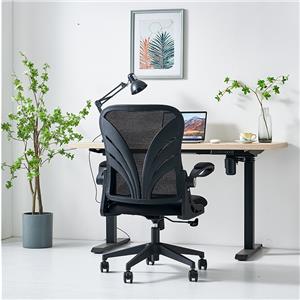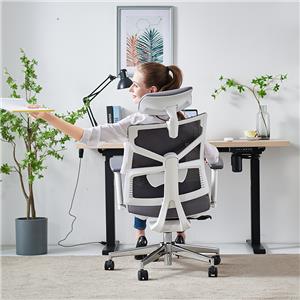How to prevent cervical and lumbar spondylosis? "Office workers" hurry up and look over
Cervical spondylosis and lumbar spondylosis are very common diseases in our lives. According to surveys, 80% of people will experience neck pain or low back pain at least once in their lives, and "office workers" are more likely to suffer from cervical and lumbar spondylosis. High-risk groups.
"Office workers" are a special group of people in modern society. This group of people has a common characteristic: sitting for a long time. Due to work requirements, "office workers" have to sit at their desks for long periods of time to work or rest. And because they maintain poor sitting postures for long periods of time and have reduced activities, they are prone to cervical and lumbar spine problems. Therefore, prevention starts with posture correction!
1. Correct your sitting posture:
1. Sit on a suitable stool or the edge of a chair, and first let yourself project the lordosis of your spine as much as possible;
2. Look straight ahead, and then relax your lumbar spine by about 10%. This is the correct sitting posture.
2. Correct your stance:
1. First, relax your whole body while standing, then tighten your jaw and tilt your abdomen slightly forward. At this time, the lumbar joints will be in a state of extremely expanded lumbar lordosis;
2. Then, try to "lift" yourself up, lift your chin, tighten your abdomen and lift your buttocks.
3. While maintaining this standing posture, reduce lumbar lordosis through the strength of your own muscles.
3. Correct sleeping posture:
1. Try to choose a plank bed with a relatively hard texture, and give priority to sleeping in a flat position;
2. If it is a soft bed, you can also use pillows (one fist height) or support rolls to maintain the normal physiological curvature of the spine, avoid rotation and distortion as much as possible, and reduce the shear force on the spine.
4. Environmental transformation:
"Office workers" can also achieve the purpose of correcting their posture by changing the surrounding environment, such as adjusting the computer screen to a suitable height, adding neck supports and lumbar supports to office chairs, etc.
5. Exercises for overcorrecting rickets (practical tips for “office workers”):
1. Sit on a suitable stool or the edge of a chair, and first make yourself as rickety as possible;
2. Maintain the rickets posture, relax for a few seconds, then stand upright and project the lordosis of the spine as much as possible;
3. Maintain this position for a few seconds, and then return to a relaxed position;
4. While doing the movements, recite silently in your mind, "As the pressure increases, the pressure decreases."
6. 5-step cervical spine exercises:
1. Head retraction: Sit on a chair, look straight ahead and relax completely, and slowly and steadily move your head backward until you can no longer move backward.
2. Neck extension: Sit in a retracted position, lift your chin, tilt your head back as much as possible, and constantly turn your head slightly left and right (turn about 5 cm).
3. Side bend of the neck: Keep your head retracted while sitting, look straight ahead, and bend your head toward the side where you feel pain (let your ear be close to your shoulder). You can also place your hands on the side of your head and push your head further toward the painful side.
4. Rotate your neck while sitting, keep your head in a retracted position, and turn your head from one side to the other. You can use both hands to maximize the rotation, maintain it for a few seconds, and then return to the starting position. .
5. Neck Bend Sit in a chair, look forward, and relax completely. Lower your head and hold your chest, fold your hands behind your head, relax your arms, point your elbows to the ground, and bring your chin close to your chest. Hold this position for 2-3 seconds, then return to the starting position.




